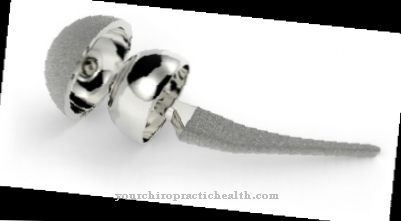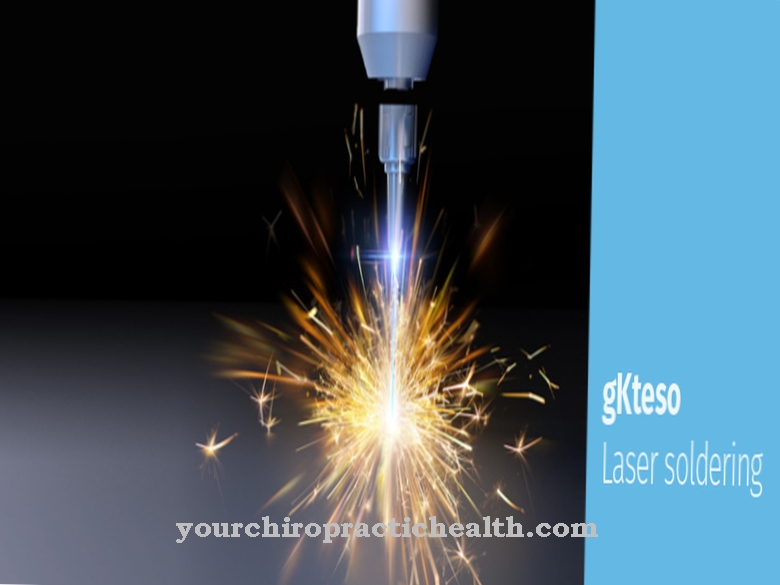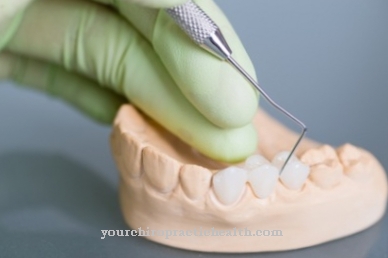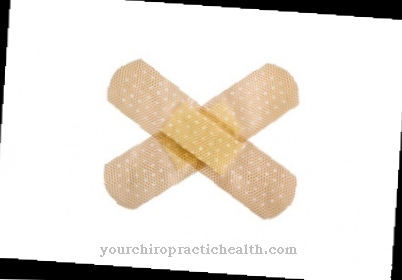Prosthetic legs replace a missing leg. The breakthrough in lower limb prosthetics was the integration of mechanical joints. Modern prostheses thus restore a large number of dynamic leg functions and give patients a better quality of life.
What is a prosthetic leg?

A leg prosthesis is used to restore a functional limb after amputations or in the event of a deformity. The first leg prosthesis was made of wood and thus enabled ideal friction. This criterion is still one of the most important properties of leg prostheses today.
The first prostheses had limited mobility. They served as a support, but not as an active means of locomotion. After the First World War, the value of prosthetics increased due to the numerous war injuries. In arm prosthetics, the first active prostheses were developed, the joints of which could be moved without the aid of the healthy arm. In lower limb prosthetics, the first lower limb prostheses with knee joints were developed around the same time.
The first bioelectronic knee joint wore the so-called C-Leg. With this leg prosthesis, the Otto Bock company designed the first leg replacement that gave transfemoral amputees an improved walking image. The world's first actually active prosthetic leg is an invention of the turn of the millennium. This so-called power knee is an adaptive and electromechanically operated prosthesis model that measures the impulses of the healthy leg and transmits them to the prosthesis motor.
Shapes, types & types
A key difference is in prosthetics between closed and open implants. Closed implants are joints that are completely absorbed by healthy tissue. Open leg prostheses, on the other hand, are required when an entire limb is lost. There are open implants as passive and, since the 2000s, also as active prostheses.
Depending on which parts of the leg are affected by an amputation or a deformity, medicine distinguishes between lower leg prostheses, forefoot prostheses and thigh prostheses. Forefoot prostheses are given to patients with amputated toes, amputations up to the metatarsus or the entire foot. Lower leg prostheses, on the other hand, are intended for lower leg amputees. There are different systems for this type of prosthesis. The most common is the short prosthesis with a so-called adhesive shaft system. The patient puts on a liner and climbs with the liner into a firmer prosthetic socket. In the case of thigh prostheses, there is an amputation of the entire leg. This type of prosthesis requires complex systems that replace the knee joint. For this purpose, various shaft techniques and liners are available today that allow different leg constructions.
Structure & functionality
Leg prostheses should take loads during the stance phase and ensure a secure stance. Apart from that, they have to be able to take over dynamic functions of the amputated or missing leg and also improve the patient's gait pattern in order to produce mobility that appears as natural as possible.
In addition to a hydraulic system, prosthetic legs are equipped with controllers, which should replace the control by the brain that has become impossible. When standing, for example, the leg must know that the wearer is standing in order to have a stabilizing effect and to give the wearer stability. However, it also has to recognize when the patient is walking and what gait phase he is currently in.
The C-Leg was the first thinking leg prosthesis to meet these demands. This prosthesis continuously collects data via sensors in order to determine the gait phase. An angle sensor determines the flexion angle. A torque sensor with a pipe adapter determines the direction of the load. The motor and the hydraulic valve of the prosthesis are connected to the sensors and are activated and coordinated by the processing controller based on the data available. Since the controller processes data collected in a matter of seconds, the swing phase and stance phase can be adjusted in relative real time and the lower leg swing, for example, matches the walking speed while running.
Other lower limb prostheses use a fluid system with a magnetorheologically fluid mass together with the controller instead of a hydraulic system. The particles in the oil-like liquid change their viscosity in proportion to the strength of the magnetic field, depending on the sensor data.
The active power knee goes even further in terms of dynamic prosthesis functions. These prosthetic legs contain special sensors on the sole of the foot that immediately recognize the gait phase and adjust the power of the motor accordingly.
You can find your medication here
➔ Medicines for painMedical & health benefits
Losing an arm is less of a limitation than losing a leg. The healthy arm can partially compensate for the loss of the other and take over its functions to a certain extent. Such compensation is more difficult with the legs. The loss of a leg therefore greatly reduces mobility. Not only moving, but also being able to stand securely with one leg is impossible. Leg prostheses are therefore of enormous medical benefit.
Especially active prostheses as they exist today play an irreplaceable role in prosthetics. Getting around is a complex process. A smooth course is ensured by countless interconnections of the nervous system and motor pathways. The fact that this security can be approached nowadays by means of sensor-controller systems with motors is due solely to the progress of the age of technology. Wooden prostheses without joints were able to take on supporting functions in the initial phase of lower limb prosthetics, but the dynamic losses were still very high.
The innovations in lower limb prosthetics enable those affected to lead a more independent and active life. They give patients a better quality of life. The visual aesthetic effect of a leg prosthesis should not be underestimated either, which also relieves those affected psychologically.



























